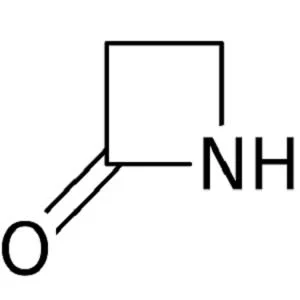Augmented renal clearance (ARC) is commonly observed in septic patients and may result in insufficient β-lactam serum concentrations. In a new study, researchers evaluated potential correlations between drug concentrations or total body clearance of β-lactam antibiotics and measured creatinine clearance. They found that specific pharmacokinetic modelling could predict certain β-lactam concentrations based on renal function, but not on absolute values of measured creatinine clearance.
Based on the study findings, a simple upward dose adjustment of these β-lactam antibiotics cannot be proposed on the basis of only measured creatinine clearance – which is easily available for clinicians – according to the researchers. Currently, routine therapeutic drug monitoring (TDM) is required to adjust daily regimens in critically ill patients receiving standard dosing regimens.
"Because β-lactam antibiotics are time-dependent, and the majority have a short half-life, prolonged or continuous infusions of these drugs may theoretically improve PK/PD [pharmacokinetics and pharmacodynamics] target attainment in case of ARC, by ensuring that serum antibiotic concentrations remain above the MIC [minimum inhibitory concentration] of the infecting pathogen during a longer period of time," the researchers explain. "However, even when prolonged infusions of standard total daily doses of β-lactam antibiotics are administered in these circumstances, PK/PD attainment may still remain suboptimal. Hence, an increased dosage may be necessary."
The study also aimed to quantify the need for drug dosage adjustments in septic patients with different levels of ARC. The researchers reviewed 256 antibiotic measurements (512 drug concentrations) from a cohort of 215 critically ill patients with a measured creatinine clearance ≥ 120 mL/min, and who received therapeutic drug monitoring of meropenem (MEM), cefepime (FEP), ceftazidime (CAZ) or piperacillin from October 2009 until December 2014 at Erasme Hospital.
The research team noted that 55 percent of drug concentrations showed insufficient β-lactam serum concentrations to treat infections due to Pseudomonas aeruginosa. There were significant, yet weak correlations between measured creatinine clearance and trough concentrations of meropenem (r= -0.21, p=0.01), trough concentrations of piperacillin (r= -0.28, p= 0.0071), concentrations at 50 percent of the dosage interval (r= -0.41, p <0.0001), and total body clearance of piperacillin (r= 0.39, p= 0.0002). Measured creatinine clearance adequately explained changes in drug concentrations in population pharmacokinetic models for FEP, CAZ, and MEM, but not for piperacillin.
"Antimicrobial treatment of sepsis is often initiated empirically, when pathogens and MICs are unknown. We therefore aimed to treat infections due to Pseudomonas aeruginosa, a pathogen frequently responsible for infections in the ICU setting and associated with high mortality rates," the researchers write. "However, we found that the most frequently documented pathogens in our study were Enterobacteriaceae spp. Although adequacy of drug concentrations was better when aiming to treat infections due to Enterobacteriaceae spp., instead of Pseudomonas aeruginosa, 1 out of 3 patients still had insufficient β-lactam serum concentrations to attain PK/PD targets."
These results highlight the complexity of drug PKs in septic patients.
"Even if new dosage regimens can be obtained from dose simulations based on population PK models for FEP, CAZ, and MEM, they will still need to be validated in the clinical setting," the researchers say. "Therefore, currently, we recommend when possible, TDM guided therapy to optimise PK/PD target attainment in critically ill patients, and particularly those at risk of ARC."
The study has some limitations including: 1) this is a retrospective study performed in a single hospital; 2) the impact of antibiotic concentrations on outcome, and the adequacy of increased dosage regimens after TDM, was not evaluated; and 3) the free fraction of β-lactams was not measured, because the measurements were not routinely available in daily clinical practice.
References:
Jacobs A, Taccone FS, Hites M et al. (2018) β-lactam dosage regimens in septic patients with augmented renal clearance. Antimicrob. Agents Chemother; Accepted manuscript posted online 9 July 2018, doi: 10.1128/AAC.02534-17
Latest Articles
augmented renal clearance, drug pharmacokinetics, β-lactam serum concentrations
Study highlights complexity of drug pharmacokinetics in septic patients






